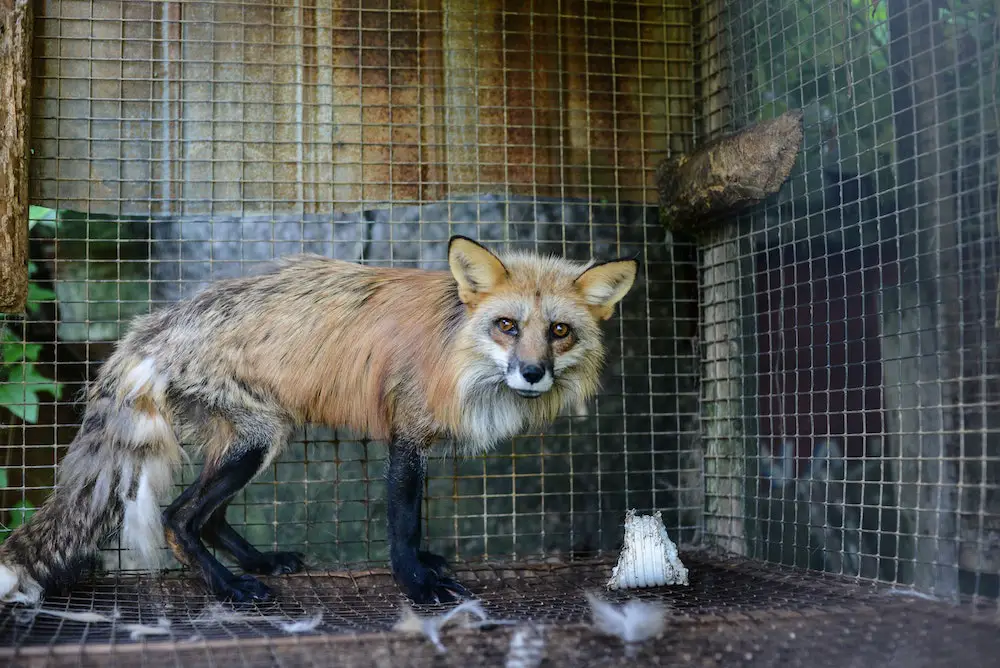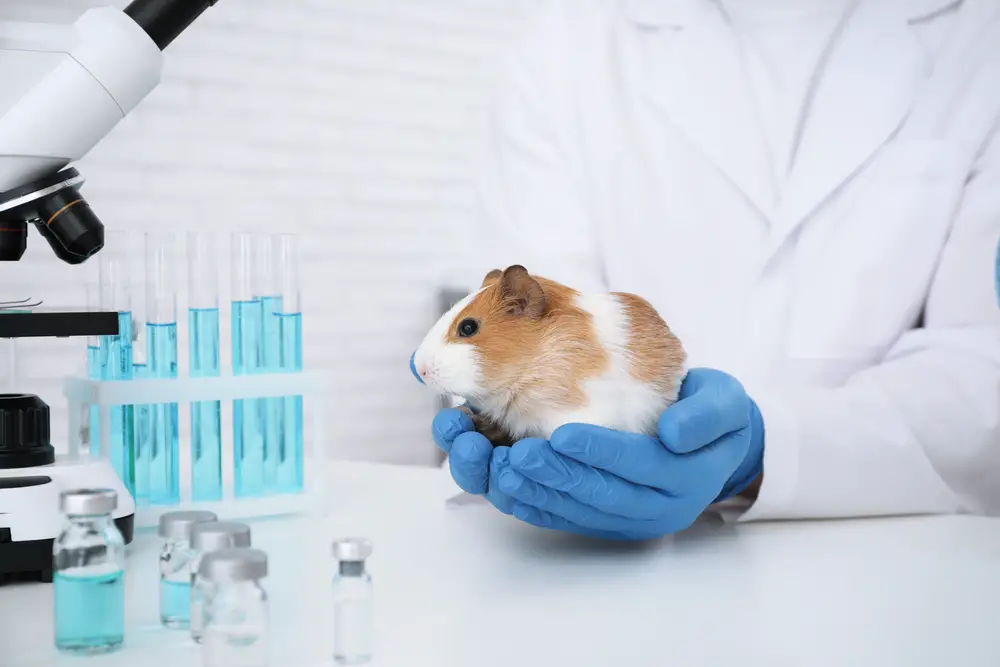Animal cruelty is a major concern in most parts of the world. Canada is one of the countries believed to have weak animal welfare protection laws. Year after year, the number of animal abuse cases increases, and not much is done.
In recent times, the Canadian government has put different measures to protect animals against abuse, which is a step in the right direction. Here’s everything you should know about animal cruelty in Canada.
Animal Abuse is on the Rise
Is Canada Cruel to Animals? According to World Animal Protection, Canada gets a failing grade in animal protection laws. The organization assessed various animal welfare policies and legislation of 50 countries. Afterward, each country was given a grade ranking from ‘A’ to ‘G.’ Canada scored a ‘D.’ Other countries that failed the analysis include:
For an extensive list, read this article: What Countries Are Cruel to Animals (2022)
Canada received a low score for several reasons. For starters, the country has inadequate legislation protecting wildlife in captivity. Their legislation fails to protect work, farm, research, and companion animals. As a result, cases of animal cruelty are continuously on the rise in the country.
Other Reasons for Penalizing Canada
World Animal Protection also raised additional concerns about the state of animal cruelty in Canada and gave other reasons for giving the country a low score. The organization was concerned that farm animal care in Canada is guided only by the National Farm Animal Care Council’s codes of practice. This indicates that the agricultural industry in Canada has been left to police itself.
Canada was also penalized for not having any entity responsible for animal welfare policies or tracking progress in the sector. Besides, Canada is yet to pass legislation that recognizes animals as sentient beings that can experience mental, physical, and emotional suffering.
Thousands of Animals are Abused Every Year
How many animals are abused each year in Canada? There are over 45,000 animal cruelty claims in Canada every year.
The numbers are believed to be on the rise each year because there aren’t any strict animal protection laws. Besides, no entity has been entrusted with the responsibility to enact the available laws or assess any progress made in the country.
However, in 2020, animal cruelty cases dropped for the first time in many years in the country. The number dropped by 44% compared to the previous year. Calls about animals lacking food and shelter also dropped by 6%.
The Humane Society stated that these statistics were a step in the right direction, and they hoped that the country would uphold the same trends going forward. However, without amendments in the Canadian legislation to protect animals, the country is still a long way to go to be considered cruelty-free
Animals Have Protection from Abuse under Canadian Law
Despite the high number of animal cruelty cases in Canada, the country is no stranger to the federal animal cruelty law, which was enacted in the Canadian Criminal Code in 1892. The current Federal legislation under sections 444 and 447 of the Canadian Criminal Code includes indictable and summary charges for animal cruelty.
If convicted for an indictable offense, an individual is liable to imprisonment for a term of not more than two years. On the other hand, if the individual is convicted for summary charges, they’re liable to a fine not exceeding $5000 or imprisonment for a term, not more than six months, or both.
Enacting Animal Cruelty Laws in Canada
Canadian provinces also have the right to enact and prosecute animal cruelty through animal cruelty regulations. However, while the regulations have the power of law, they don’t result in a criminal record. Each province has tailored the legislation to meet their needs, but the provisions are the same across the board.
For instance, most provinces consider it a regulatory offense to cause any form of distress to an animal. Distress can be anything from denying the animal food and shelter to causing physical pain. Some provinces also have different penalties for violations of the provisions. For example, Ontario imposes higher fines and longer sentences of imprisonment depending on the offense.
On the other hand, Alberta places more emphasis on livestock welfare while Saskatchewan and British Columbia’s legislation closely matches Ontario’s. Quebec is among the areas that don’t include jail sentences. However, there are proposed amendments that aim to make the regulations similar in all the regions.
There are Ways to Report Animal Abuse
Reporting animal cruelty cases goes a long way in helping end this inhumane act. In Canada, reporting animal abuse isn’t a problem, thanks to Humane Canada. Humane Canada, previously known as the Canadian Federation of Humane Societies, is the country’s federation of Society for the Prevention of Cruelty to Animals (SPCAs) and humane societies. The organization was founded in 1957 and has since then made efforts to end animal abuse.
Humane Canada is the go-to national voice on animal welfare issues for government, media, industry, non-governmental organizations, and the public. They work with key stakeholders across Canada to create a positive impact and take a stand in ending animal cruelty in the country.
However, Humane Canada isn’t an animal rescue center, and they don’t provide animal cruelty inspections. The national federation is only a representation of SPCAs and humane societies. They provide the information you need to report different cases of animal abuse in Canada. Some examples include:
Domestic Animals Neglect and Cruelty
If you’ve witnessed animal cruelty against domestic animals, Humane Canada recommends calling your local SPCA or humane society and speak to the Animal Cruelty Investigations department. If you don’t have a local SPCA, call the provincial SPCA, local police or, the RCMP.
The federal organization also shares tips on how to recognize puppy or kitten mills. These include:
Farm Animals Neglect and Cruelty
If you’ve witnessed animal cruelty against farm animals, and have already tried calling your local SPCA or Humane Society and speaking to the Animal Cruelty Investigations department. Otherwise, contact the provincial SPCA, local police or, the RCMP if your local shelter doesn’t have jurisdiction over farm animals or you’re located outside the shelter’s jurisdiction.
Wild Animals
If you’re having issues with wildlife on your property or the surrounding areas, call the local wildlife center to take care of the issue. Alternatively, you can contact the provincial Ministry of Natural resources.
Animal Injury
If you come across an injured animal, Humane Canada recommends contacting a nearby veterinary hospital with the expertise to take care of that animal. In emergencies, call the vet and listen to the instructions they give you to save the animal before transporting it to their premises.
Testing of Cosmetics on Animals is Legal
Cosmetic testing on animals is a global problem. In numerous countries, thousands of animals undergo a great deal of pain and suffering in the name of developing cosmetics.
The sad part is that some of these tests are not conclusive. Because animals have a different skin composition from humans, the tests conducted are not an indication of safety to humans.
Animals are suffering for nothing. Canada is among the countries that banned cosmetic testing on animals. In 2019, the Cruelty-Free Cosmetic Act, Bill S-214 died, which meant that researches would continue to use rats, mice, guinea pigs, and rabbits for cosmetic testing.
The bill would have:
So, if you’re interested in finding cruelty-free cosmetics, you can start by reading this guide: What Does Cruelty-Free Really Mean? (Ultimate Guide)
Efforts to End Cosmetic Testing on Animals
Failing to end cosmetic testing in Canada in 2019 didn’t discourage animal rights activists. It only fueled their efforts further.
The Animal Alliance of Canada teamed up with Humane Society International/Canada to launch the Canadian arm of Be Cruelty-Free, the most extensive campaign to end animal testing of cosmetics. Together, the organizations are working to:
Numerous Canadians have joined the campaign and are signing the petition to end animal testing of cosmetics and ingredients. Especially since in progressive countries, like the EU, cosmetic animal testing is completely prohibited.
Animal rights activists believe it’s only a matter of time before they can see a change in this area. However, unless the government takes a stand, the country still has a long way to go.
Animal testing doesn’t just stop at cosmetics. Medical research and scientific developments rely on this practice too. Here’s what you need to know: The 4 Most Important Animal Testing Facts About Canada
The Humane Societies and SPCAs are Understaffed
In 2016, Canada had over 125 humane societies and SPCAs. When you hear this, you probably think that this is a large number of organizations, making effective changes easier. Don’t let the numbers fool you because they’re not an accurate representation of the state of affairs in the country. You see, despite having several anti-cruelty organizations, Canada is still lagging in terms of reforms.
The reason for this is that the organizations are grossly understaffed. The organizations have employed about 2000 employees who are supported by over 26,000 volunteers. There are 13 times more volunteers than actual staff, which is a clear indication of the financial constraints in the organizations.
As a result, it’s harder to implement and make more considerable changes. However, the organizations are doing impressive work despite the financial constraints and increased workload. They’ve enforced numerous animal cruelty investigations, lead campaigns, and used millions of dollars to take a stand against animal cruelty.
More funding and human resources would go a long way in helping these organizations achieve their objectives faster.
The Legislation Doesn’t Stop Animal Cruelty
The day that the Federal animal cruelty act was passed was a day of celebration for animal rights activists in Canada and other parts of the world. The act was the light at the end of a tunnel that had been dark for many years. Many hoped that the legislation would change the amount of animal cruelty in the country and mark the dawn of a new era.
Unfortunately, while the legislation was a step in the right direction, it has been ineffective in implementing the changes many hoped to see.
You see, even though the penalties exist, it doesn’t mean they’re always applied. Judges have the final say when it comes to passing sentences, and there has been a tradition of taking both aggravating and mitigating factors into account.
Furthermore, with areas like Quebec not including jail terms in their sentencing, people see this as a lenient way of dealing with the problem. If all they have to do is pay a fine and the sentencing doesn’t get on their criminal record, there is no reason to avoid animal cruelty. As a result, animal cruelty cases in the country are constantly on the rise from year to year.
The fact that there haven’t been dire consequences for offenders also sends a message that the Canadian government doesn’t take the issue of animal cruelty seriously. For this reason, citizens that are contemplating animal cruelty have nothing to discourage them from doing it.
There are Many Loopholes in the Anti-Cruelty Law
For a country with a federal anti-cruelty act for decades, Canada shouldn’t be getting failing grades from World Animal Protection. However, as we’ve mentioned, this country is among the countries believed to be slacking in this area. But why is it?
Evidence shows that Canadian laws about animal cruelty are quite lenient and often favor individuals. For instance, Canadian law stipulates that there are times when someone may need to kill an animal to subjugate it. So, if you can prove you had justifiable cause to kill an animal, you can get away with it in Canada.
Furthermore, Canada has no problem with transporting animals for up to 72 hours without food or water. And if the animals have to be grouped for faster transportation, there’s no problem with that either.
If it’s affecting business, animal cruelty seems to be put in the back banner in this country. Not to mention, animals are considered property, which implies the owner has the right to harm the animal or do whatever they want to them because they belong to him.
Canada Has the Most Outdated Animal Protection Laws
Canada is believed to have some of the worst animal protection laws in the western world. The laws are not only outdated but have little to do with animal protection. Various industries are left to make their own decisions and judgments with little to no government insight.
Furthermore, there are no regulatory bodies in place to follow up on law enactments and industry inspections. Meaning people can easily get away with animal cruelty in this country, especially if their business would be affected by upholding anti-cruelty regulations in their business premises.
Wrapping Up
Canada is among the countries yet to make significant strides in implementing a ban on any form of animal cruelty.
The country only has one Federal cruelty act that was put in place in 1892, and efforts to amend the law and put in place new legislations are constantly being dismissed. The loopholes in the legislation and leniency in making court rulings have made the law less effective.
The fact that humane organizations and SPCAs have limited resources and lack enough funds makes things worse. Nonetheless, animal rights activists have not given up the fight. They’re going above and beyond to ensure Canada makes the right choice and ends animal cruelty.
Currently, numerous residents have joined the campaign #Be Cruelty-Free by signing petitions to end this inhumane act. This is a move in the right direction, but the country still has a long way to go to be entirely cruelty-free.



